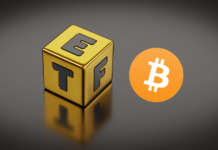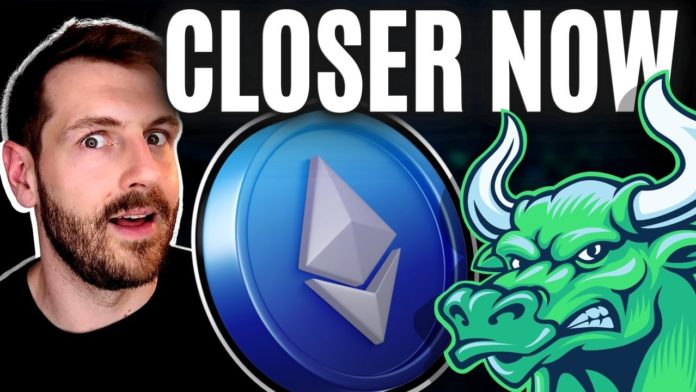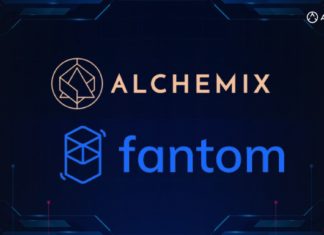Ethereum Merge is one of the biggest stories in crypto moved one step closer to its end goal. Yesterday we witnessed Ropsten, Ethereum’s longest-running testnet, had a successful transition to the proof-of-stake algorithm.
Many investors and Ethereans have a lot riding on this change from Proof of Work to Proof of Stake. But there’s a lot of confusion around the Ethereum Merge and it is understandable. Ethereum is trying to redesign the plane while the plane itself is still flying. So of course it will be confusing and scary at the same time.
Then, there are the ETH maxis, who for the last 2.5 years kept saying that the merge will happen ‘in another 6 months. Even the ETH developers don’t know when it will happen but they expect it soon. But with Ropsten on PoS, we now see a ray of hope. Therefore, in this article, you will discover more about this important milestone.
Why is the Rospten Merge Such a Historic Event?
Ropsten Merge is a crucial step before Ethereum’s actual transition to the Consensus Layer (formerly known as ETH 2.0).
In essence, the Ropsten merge will give developers the first taste of what things will look like in the future. This will be possible when Ethereum finally makes the move to a less energy-intensive PoS algorithm mechanism. And it’s quite clear that a successful Merge on the testnet would bode well for Ethereum’s mainnet’s transition.
Summary of the Ropsten testnet merge: 🧵 pic.twitter.com/xHBManCuru
— parithosh | 🐼👉👈🐼 (@parithosh_j) June 8, 2022
This process has been in the works for some years though, in fact, Rospten was kicked off in 2016. With multiple delays, it did send some waves of frustration among the community and investors.
Therefore, the new PoS model is supposed to solve some of Ethereum’s biggest issues, such as high transaction costs and the network’s ability to scale, so the stakes are indeed high, with the biggest upgrade in Ethereum’s history—if successful— having a good chance to become the crypto industry’s event of the year.
Before we head out to understand Why and when the Merge will happen, it’s very important to take a look at the background of Ethereum. This will give you a fair picture of why Merge is so crucial for Ethereum.
More About Ethereum’s Merge
Ethereum already has a couple of controversial aspects of its history before the Merge delays. The ETH Foundation, which includes Vitalik and other co-founders like Gavin Wood went on to found Polkadot in 2014.
Therefore, the foundation’s goal from the beginning was not to be money like Bitcoin but to be the system that people build their decentralized apps upon. Like a decentralized version of Microsoft Windows. That’s not controversial. But premining is. And Ethereum did A LOT of it.
With Bitcoin’s fair launch, anyone could mine and get the 50 BTC block reward. And then anyone could trade their coins to others that wanted to buy. However, ETH, which started and still uses miners in a PoW system, mined their coins in advance. This allows heavy insider concentration. A full 10% were mined in advance just for the ETH Foundation. The creation of coins through mining is supposed to happen as the network is in use producing blocks the way Bitcoin and other PoW chains do.
This is why you hear many people, not just Bitcoin Maxis say ETH is a scam. If the industry was larger then, many would-be facing criminal prosecution. There are arguments of potential fraud or self-dealing for the portion of the pre-mined coins that the owners ‘sold to themselves’. It looks very shady.
Then, in 2016 happened with something that threatened ETH’s existence altogether.
The DAO Hack
The first major DAO on ETH was hacked during its ICO. ICOs were a big deal back then with the hype that NFT and IDO drops have now. The hackers took 3.6 million ETH.
What the ETH Foundation decided to do was hard fork ETH rendering that 3.6 million ETH worthless. The community voted to do this but many wanted to keep the immutability aspect of the blockchain. These are the ‘code is law’ people.
Those in favor of immutability and keeping the old chain as it became what is now ETH Classic, which without much fanfare is the #28 project in crypto. However, for those that went with the hard fork, that’s the Ethereum we have now that’s #2 only behind Bitcoin. So ETH is not without its problems and controversies. Now let’s look at the impact of the merge
It's a big day for Ethereum.
Within the next 24 hours, the Ropsten network will undergo The Merge.
This marks the final phase of testing before deployment on mainnet.
Let's dive in… pic.twitter.com/X7GdZqoR8z
— pastry (@PastryEth) June 8, 2022
Why Merge?
There are a few reasons why ETH wants to make this change. Tech entrepreneur and Dallas Mavericks owner, Mark Cuban explains, in a Fortune article why he thinks it’s a hugely bullish move to go to PoS. The main reasons are:
1) Environmental
The environmental concern is a major one. Even legacy financial publications have been talking about this about PoW mining. Now Bitcoin specifically, and other PoW chains have reasons to continue using it, especially for security but for ETH this is a good move. Projections are as high as 90% less energy usage for the popular blockchain.
2) Scaling Issues
ETH can’t scale. That’s the issue. For every new CryptoKitties or BAYC collection or a new game that gets popular, it bogs down the network. The network slows down and gas prices skyrocket. It’s why Axie had to create its sidechain, Ronin, to run their game.
Many people don’t know this but gas prices vary based on the type of transaction you have. For example, today, for a USDT transfer of the ERC-20 token the average price is $4.54 gas. But to swap Curve, the average is $62.94. Not a great deal unless you are moving a lot of money.
This often creates a trap for small, retail ETH users. It costs more than the amount they have in gas to move their tokens, rendering them stuck where they are.
3) Ability to Add Sharding
Vitalik has said more than once that sharding is the future of ETH. And it’s easier to add sharding to a PoS chain. The primary reason why is that in a PoW chain, part of the work involved is that every node downloads and holds onto the entire history of the chain. Great for authentication but lousy for speed.
Sharding is a system where the nodes, validators in this case, only have to hold part of the chain’s information. The information is spread out over many, many validators. There’s enough redundancy that if some validators go down, the system can still access every block in the chain when configured correctly.
So if the validators don’t need to hold or download the entire chain’s information and history, it can move MUCH faster. And this gives ETH the scaling it needs. Zilliqa and Near both use sharding and it increases their throughput, and transactions per second and brings costs down.
4) Fewer ETH Issued After This and EIP-1559
Miners get rewarded for finding the block with the block reward. That reward is new coins issued on the PoW chain. That’s how Bitcoin works. And for now, that’s how ETH works too. But after this change, there will be no more miners. New ETH will go to validators for validating transactions and at a smaller emission rate than the current one for PoW.
So first, fewer ETH with be issued. Then, you have EIP-1559. Put in place last year, it changes the fee structure to include a base fee that users pay regardless of the type of ETH transaction. Then a tip that you can add to that if you want your transaction processed faster.
Anyone who has ever taken an Uber or used a taxi app has seen this in action with a base price and then additions for things you request like door-to-door service or card processing fees. The big difference is not just this price structure, but that ETH now burns the base price. So add the lesser issuing and the burning of the base transaction fees and you get fewer ETH.
Some even believe it could make ETH deflationary overall. Daily, ETH is burning ~4k ETH and the total so far is almost 2.1 million ETH burnt. That’s a lot of added value for existing holders. Net issuance at the same time 2.1 million burned: 1.2 million. So it is deflationary for right now.
But note as the Consensys article says. 1559 will NOT reduce gas fees. NONE of these things will help reduce gas fees. But if some of the scaling options work, then the network will have fewer gas price spikes than in the past.
When Merge?
The short answer is: Who Knows? But there are some credible projections that it could happen this summer. Is this a case of ‘it will be ready in another 6 months? We don’t know but at least, in this case, we are watching what the developers say. After all, they are the most informed on the subject.
They believe it’s shipping by the end of Q2. And the PoS chain, known as the Beacon Chain, is on testnet now. Do you like learning more about topics like this that affect the crypto-economy? If so, then you should check out AB Access. In Access, we talk about these topics daily and you get access to the team directly.
Impact of Ethereum’s Merge on Market
One of the things we know is that it takes 32 ETH to become a validator. That’s a lot of money. But much less than many PoS pools. But if you don’t have 32 ETH, you can join a pool and every exchange you’ve ever heard of has a validator pool.
There are over 300k validators right now. We expect that number to grow. Competition is heavy and returns will be low in the 3-5% range. We also know the network will run faster and chances of it getting bogged down by isolated events like a super hyped NFT collection will decrease too.
What About L2s?
ETH developer, Marius van der Wijden, says he expects Layer 2 solutions to still be the solution to scaling ETH now and long term. Payment channels and rollups will continue to lead.
Layer 2 solutions just reached $7 billion TVL, a record. As a result, more ETH users are turning to Arbitrum, Loopring, Optimism, or Polygon for more speed and lower fees. The main point here is that sharding and PoS together could be the long-term scaling solution for ETH. But that said, when the merge happens, what will mostly happen for ETH users is more of the same.
- Gas fees will likely not drop
- Layer 2s will continue to grow
What About all the ‘Ethereum Killers’?
Well first thing, almost all of them run PoS already. They all run faster and process more transactions than ETH does, even on their EVMs.
And for many, they offer more than just the Ethereum Virtual Machine. Avalanche is one of a few that made a dedicated separate chain to run EMV with its C-Chain. Other apps use a different chain. Cardano does this too.
So chains like these, or like Polkadot and Cosmos that have other goals like interoperability should not see much change in demand when the ETH merge happens. We think there is enough room for all of them to grow.
Conclusions
So that’s up to the minute on the merge. What do you think will happen to ETH when the merge takes place? What about your favorite other chains like AVAX, SOL, FTM, LUNA, or DOT?
Do you think they will get positive or negative aftereffects from the merge? Soon, we will find out.
For more cryptocurrency news, check out the Altcoin Buzz YouTube channel.
Find the most undervalued gems, up-to-date research and NFT buys with Altcoin Buzz Access. Join us for $99 per month now.



























